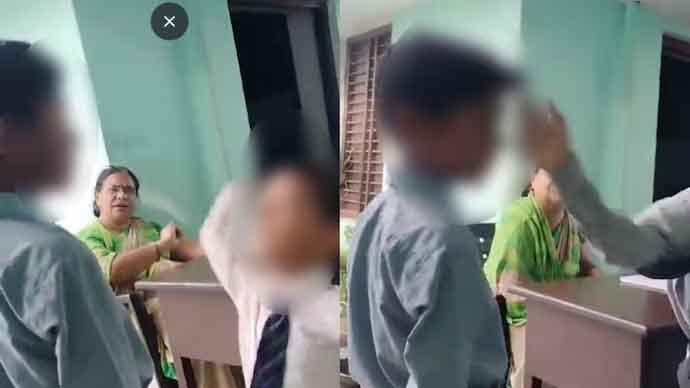
Introduction
Child abuse is harm to another person, whether an adult or a child, or neglect of a child. In all racial, national, and income groups, child violence exists. Abuse of children may be physical, mental – verbal, sexual or ignored. Abuse may cause the child to suffer serious injury and could even result in death. Over 19% of the world’s children live in India, making it the country with the highest population of children in the world. In this ever-changing society, it naturally defines the role of the country in being a safe haven for children. The nation therefore offers a host of fundamental and legal rights to its children, thus in its overall strategies, schemes and objectives, the value of their protection, care and development is enshrined.
Based on lengthy interviews, the most reliable research studies in India estimate Thirty percent of men and 40 percent of women remember that during childhood they were sexually assaulted, describing “molestation” as actual genital contact, not just exposure. Around half of these are directly incestuous, with the parents of the family, the other half are usually with others, but with the involvement of caretakers in at least 80% of instances. Not only are these seduction experiences dispersed from fragmentary memories, but they are remembered in detail, usually over an extended period of time, and have been confirmed by follow-up reliability checks in 83 percent of cases, so they are unlikely dreams.
Seductions have occurred at much earlier ages than historically believed, with 81% occurring before puberty and an impressive 42% under 7 years of age. As significant as these rates of violence are, however, they represent only a portion of the real rates, not only because those interviewed do not include categories that have been shown to have extraordinarily high rates, such as inmates, prostitutes, shelters, psychotics, etc., but also because only conscious memories have been counted, and the earliest seductions of children are almost never remembered. Statistical adjustment of what is understood about these additional variables. I have concluded that the real sexual assault rate in America is 60% for girls and 45% for boys, nearly half of which are directly incestuous. Different groups on child violence are classified, which are as below.
Child Sexual Abuse –
Child sexual exploitation is the involvement of a child in a sexual activity that he/she does not completely understand and accept. First of all, the child is naturally unaware of the sexual activity and cannot give informed consent. While being developmentally unprepared for the act. Sexual exploitation of children is mainly categorized into two primary types:
Contact Type –
- Forcing genital regions to be touched.
- Kissing or holding them in a sexual way.
- Intercourse from the vagina or anal.
- Sexual assault.
Non- Contact Type –
- Pornography revealed to.
- Sexually intrusive remarks.
- Virtual Sex.
Signs of Child Sexual Abuse:
Behavioral signs-
The child may demonstrate knowledge or involvement in sexual activities that are inappropriate for his or her age, or even seductive behavior or exhibit unusual behavior, either very violent or very passive.
Physical signs –
A child may have difficulty sitting or standing, or may have trouble underclothes that are dirty, bloody or ripped. A red flag is swelling, bruises, or bleeding in the genital region.
Physical Child Abuse –
Generally, physical child abuse results in potential physical harm from a confrontation or interaction that is under the control of a parent or person in a position of power or authority. The resulting injuries are considered abuse, irrespective of whether the object of the action was to cause injury.
Physical Child Abuse primarily comprises of following actions/incidents:
- Punishments unreasonable.
- Beating / abusing a kid.
- Leaving a baby in an undignified place.
- Conditions for Forced Jobs.
Signs of Physical Child Abuse-
- Bruises, welts or wounds etc. Unexplained
- Fearful conduct or shy conduct, etc.
Child Emotional Abuse –
Emotional abuse is also seen as a behavior pattern that hampers the emotional growth of the infant, making it incredibly difficult to demonstrate. The lack of evidence is seen as a significant obstacle to the current Child Protection System in the case of Child Emotional Violence. When other types of violence are found in an infant, emotional abuse is almost always present. Child Emotional Abuse consists mainly of the following cases:
- Child Isolation or Exclusion
- Stigmatization of an Infant
- Failure to have a welcoming atmosphere
- Caregivers who fail to respond to the emotional needs of a child
Neglect –
Neglect is a form of abuse involving the deprivation of adequate food, clothing, housing, supervision, medical care and education for a child. Neglect often harms children, but it is more about being passive than the previous types of violence, which are more active, and not doing anything.
Neglect may primarily comprise of the following:
- Treatment Inattention.
- Failure to track the development of children.
- Failure to provide nutrition
- Failure to track the development of children
Signs of Neglect:
Kid seems to be unattended.
- Child hygiene can appear to be consistently low.
- The child can exhibit distracting, disruptive behavior.
Conclusion
The report clearly highlights a rise in child abuse atrocities, the author also sought to clarify the impact of child abuse on the nation’s overall growth and inclusive development. Although the study specifically distinguishes between the various types of violence faced by Indian girls, it also highlights the immediate need to introduce the much-needed reforms in this field. This study note seeks to indicate the fact that child violence not only impairs the productivity of the child, but also vandalizes the child’s socialization process. Therefore, society needs to wake up to the call to protect and improve their children. This would not only allow children to be more interested in the process of innovation and evolution, but would also complement the greater good of world society.
Mansoor Ahmad Malik,Research scholar Department of Botany University of Kashmir Mail; [email protected]
Note; Errors and omissions will be accepted















































